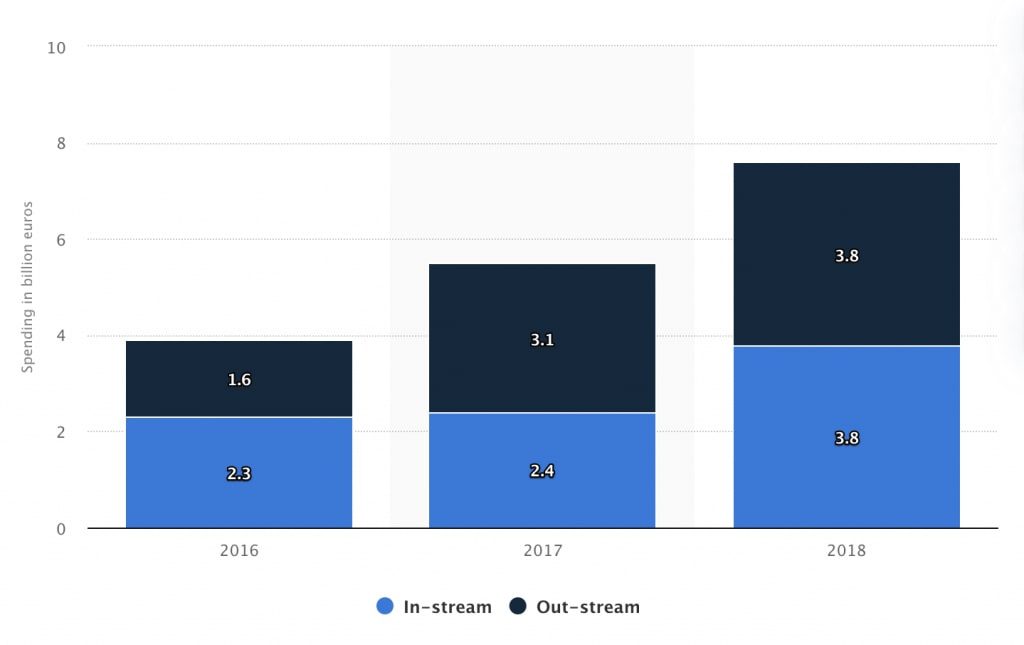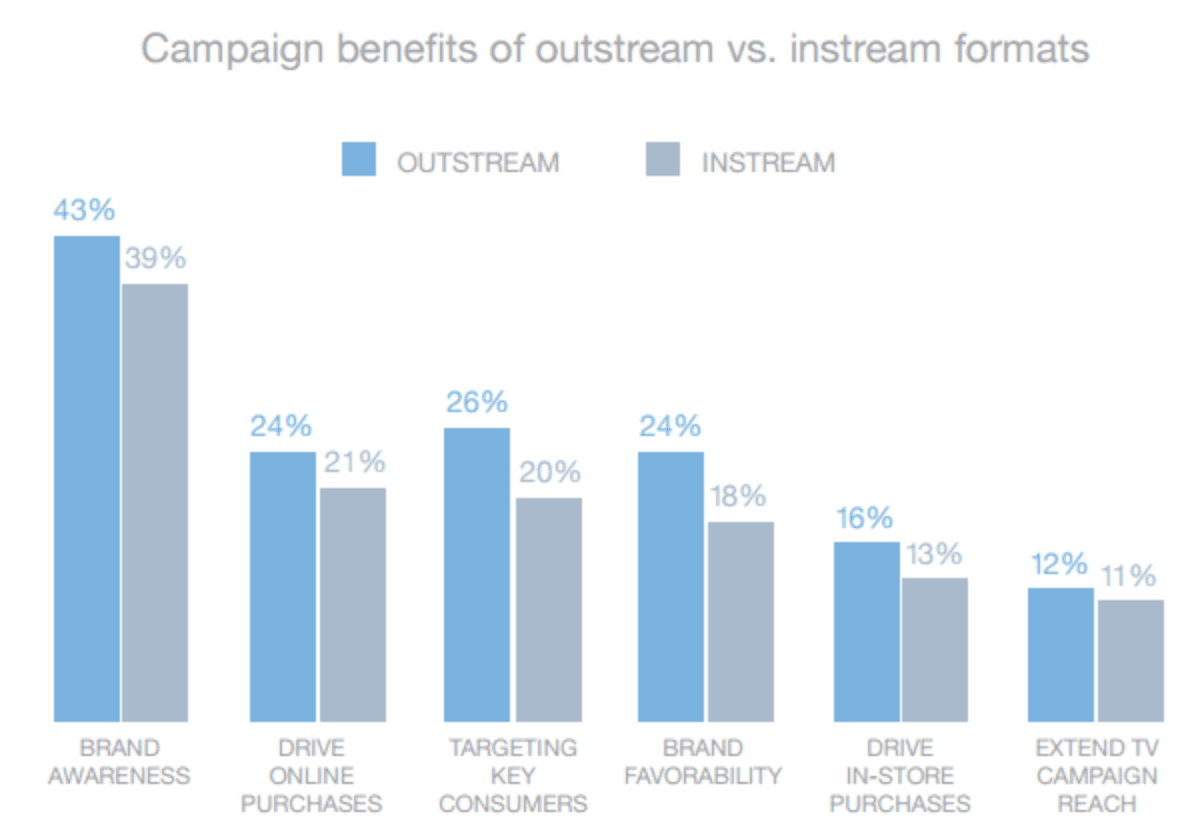The growth of Outstream video shows no sign of diminishing since its introduction to the video monetization mix early in the last decades. As space for Instream ads has always been more limited, the revenues of Outstream have actually overtaken those of Instream. The increasing spend on Outstream has inspired publishers to find a subtle way to increase Outstream slots even further, with new formats and advanced implementation techniques that are still engaging enough to keep the reader intrigued in the ad.
This raises the question of whether these new developments are appealing to buyers, and if they help enhance the overall reputation of Outstream in the video monetization market.
What is Outstream video?
If still unfamiliar with what Outstream video is, you’ve probably already seen it without even realizing it. It’s the video ad that opens up in between paragraphs of text, giving advertisers a new opportunity to engage with readers.
“Outstream is a video advertising unit that autoplays in a large format player whenever a user navigates to it within text content (typically an article), even if the publisher doesn’t have their own video content. It’s called Outstream because the video ad exists outside of online video content – also known as Instream video content — where the ad plays either before (pre-roll), during (mid-roll), or after (post-roll) the publisher’s video content.” (ref- Xandr)
Outstream video ads spend
Due to the massive supply opportunities available for publishers who implement Outstream video ads, and the desire of advertisers to communicate with video over standard banners – it was perhaps inevitable that Outstream spend would eventually eclipse that of Instream, despite the latter generally being the more sought after option from a buyers perspective.
Indeed, brands investing in video ads are now 42% more likely to agree that Outstream will have a larger impact on their advertising approach than Instream in the future. Also, 37% of brand specialists agree that Outstream spend will continue to top Instream spend in the coming years, with the gap only getting wider.

Instream and Outstream advertising expenditure in Europe from 2016 to 2018 (in billion euros)
Outstream formats
There are many different formats which can be classified as Outstream, such as in-article (also known as in-read) within news content, or native in-feed on social sites like Facebook. Behaviours can also vary greatly, with the ability to adjust player behaviours to boost performance, such as floating the ad on the page rather than having it quickly scrolled past.
Innovative new takes on Outstream have also popped up over years, such as interactive ads, 360° video, vertical ads and dynamic ads. Newer still and growing in popularity are social extend video formats and playing video ads within ‘stories’ content.
Technical advancements
Until recently, Outstream video ads were implemented via an embed code that was placed directly on a website or called via an ad server.
The digital market moves quickly however, and following the lead of the display market, Outstream setup is moving more towards header bidding, and being implemented via adaptors, generally using prebid. With developments such as multi-format prebid, it is now even possible to offer the same adslot to Outstream buyers and display buyers, creating the long desired unified auction.
To display an Outstream video, two key things are needed:
- A VAST URL or VAST XML document, provided by the Prebid video demand partner.
- A Client-side player environment capable of playing a VAST creative, known in the market as the Renderer.
We’ve detailed our own unique meta-adaptor and renderer setup here (prebid.org), whereby all demand sources can easily be connected to a single prebid adaptor, ensuring the most optimal auction setup together with standardized renderer appearance and behavior.
Advertiser performance
Is the increase in spend driven by the huge supply availability, or do Outstream video formats provide the desired results that lead to an increase in ad spend?
As with most things, the answer probably lies somewhere in between, with new innovative formats and advanced implementation solutions playing a massive part in attracting more brand spend to Outstream, while having almost unlimited supply will always help when comparisons are being made with Instream.
Outstream provides buyers with an opportunity to buy video at scale, usually at a decreased CPM to what they pay for Instream. For publishers, this CPM will still be considerably higher than the leading display banners, meaning they have a shared interest in implementing Outstream formats that perform well on key metrics such as viewability and completion rates.

The digital advertising space is in a constant state of flux, now more so than ever, with GDPR and the depletion of the 3rd party cookie driving a fundamental change in the industry. With higher importance placed on context and 1st party data, and increasing video spend combined with the advancements detailed in this piece, it becomes clear that the Outstream revolution may have really only just begun.
Find out how our platform can support your video strategy
Fill out the form and one of our video experts will happily show you around our platform and answer any questions you might have.



